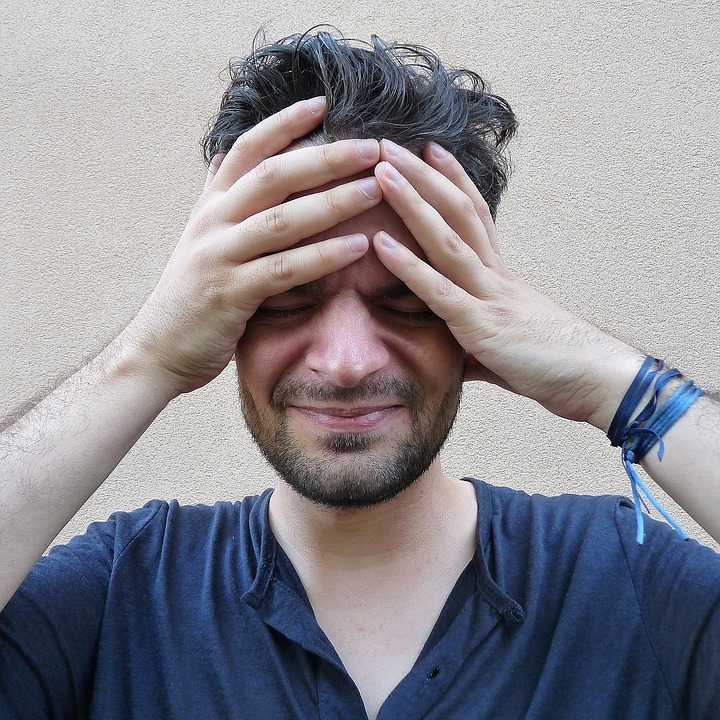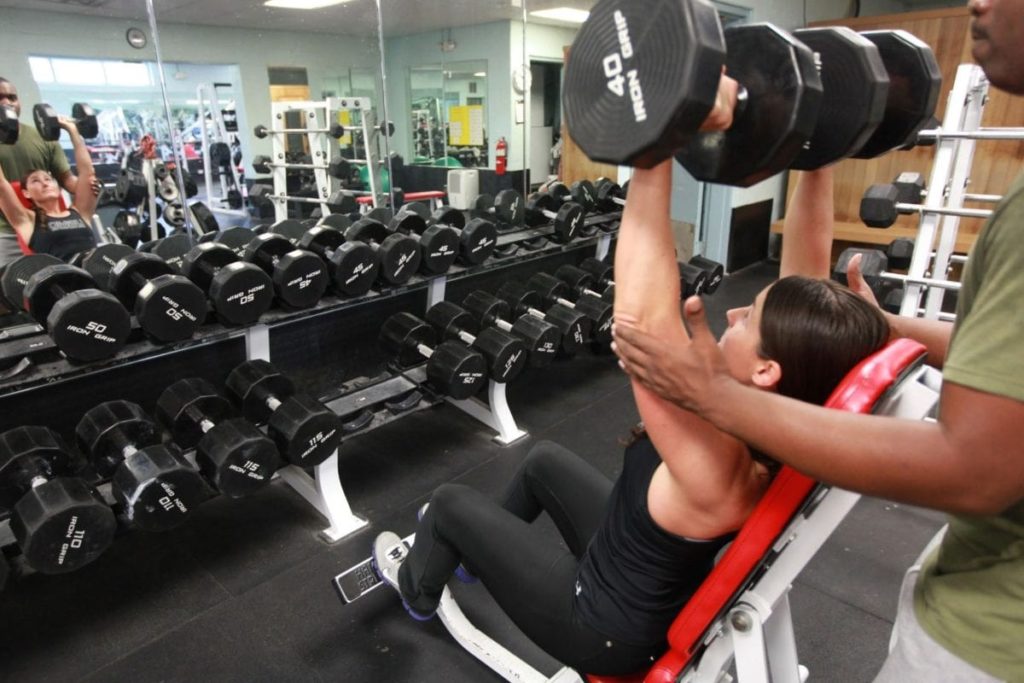Headache is one of the most common issue in the body. All people may have experienced having these, and according to the World Health Organization, most people experience a headache from time to time. While some can be painful, a majority of headaches can be treated with simple painkillers (or simply taking a meal) and can go away within several hours.
There are different types of headaches, and each one of them has its own set of causes, triggers, symptoms and treatments. Different headaches are also associated with specific locations around the head, too. Knowing where your pain is can be the key to help alleviate the pain you are suffering. This information can help you identify what kind of pain relief to use or decide to seek medical attention.
There are more than 150 different types of headaches, according to the International Classification of Headache Disorders (ICHD). These types are divided into two categories: primary and secondary. Here are some of the most common types and how you can treat them:
Primary Headaches
A primary headache is a headache that is not caused or is not a symptom of any other condition – it’s the condition itself.
If you are working in a space with paint fumes or other chemical smells, it important to plan the proper safety measures for employees and residents.
1. Migraine
Migraines are a common type of primary headache, as one in 7 people suffer from it. It’s characterized by an intense throbbing pain on one side of the head. Migraines tend to be recurrent, and each one may last up to three days. For some people, it’s a life-long condition.
Symptoms:
- Throbbing pain on one side of the head
- Moderate to severe pain
- Nausea and/or vomiting
- Blurred vision or seeing zigzag lines or flashing lights
- Increased sensitivity to light, loud noises or smells
- Feeling light headed
Around a third of people experience an aura (a visual or sensory disturbance that lasts between 5 to 60 minutes) before the onset of migraine. An aura can include:
- Seeing zig-zagging lines, spots, or flickering lights
- Numbness of the muscle
- Pins and needles
- Muscle weakness
- Partial loss of vision
- Difficulty speaking
Causes:
The exact causes of migraine are unknown, but it often runs in families. It is also common for people with pre-existing conditions, such as epilepsy and clinical depression. Triggers for migraine include stress, anxiety, hormonal changes, and dehydration. For some people, the things that trigger migraine is lack of sleep or sleep disruption, or taking certain kinds of foods or medications.
Sometimes, aura symptoms can indicate stroke or meningitis, so if you experience these for the first time, consult a doctor.
Treatment and Prevention:
Over-the-counter painkillers like aspirin or ibuprofen can help stop headaches or reduce pain. Some doctors prescribe an anti-emetic drug, such as metoclopramide or ondansetron or any migraine-specific combination drugs, if nausea and vomiting occurs.
If you are suffering from a migraine, move to a dark and quiet room, and lie down until the symptoms pass. If you can sleep, then sleep. Minimize your exposure to anything that makes your headaches worse. Also, if you know your migraine triggers, stop consuming them immediately.
Drug options to prevent migraine include propranolol, topiramate and amitriptyline. You can also consider switching your diets, especially avoiding foods that cause your headache and replace them with friendlier choices. Or you can also consider dietary supplements, acupuncture, and meditation.
2. Cluster headaches
Cluster headaches are recurrent headaches that are more likely to develop in men than women. Eighty percent of sufferers are males, mostly between the ages of 20 to 50. People describe this intense burning or piercing pain around or behind one eye. These are usually sudden and can last around 15 minutes to three hours. Attacks tend to occur in daily clusters, and it can persist for weeks or months. They take place at the same time of the day, and it can often happen a couple of hours after falling asleep at night.
Symptoms:
- Stabbing or burning pain over one eye or temple
- Severe, excruciating pain that lasts from a few minutes to few hours
- Watering eye
- Drooping or swollen eyelid
- Blocked or runny nose
- Shrunken or constricted pupil
- Sensitivity to light and sound
- Sweating
- Restlessness or agitation
If you think you’re suffering from a cluster headache for the first time, you must seek a doctor immediately. This will help rule out other causes and provide an accurate diagnosis.
Causes:
The exact cause of cluster headaches is unclear, but these are more likely to occur in smokers. People must avoid smoking and alcohol during attack periods. Also, it is better if the sufferer would quit smoking and drinking alcohol.
Treatment and prevention:
It is possible to avoid this type of headache by limiting your exposure to common triggers like cigarettes, alcohol, or strong smelling chemicals in perfume and paint. Treatment options for cluster headaches include, topiramate, verapamil, sumatriptan and steroids. Your doctor can also help organize oxygen therapy for you, which can alleviate attacks. For difficult-to-treat cases, doctors may suggest surgery.
Cluster headaches are usually not life-threatening, but if you must seek immediate medical attention if you experience new symptoms, develop any weakness or paralysis, develop fever or if it becomes more severe or more frequent.
3. Tension headache
Tension headache is the most common type of headache but it can still be very painful. It is characterized by a dull, aching, non-throbbing pain on both sides of the head. This type of headaches normally last for 30 minutes to several hours. According to the World Health Organization, 1-3% of adults suffer from chronic tension headaches.
Symptoms:
- Dull, non-throbbing pain on both sides of the head
- Feeling of pressure behind eyes
- Sensitivity to sound and light
- Tightness of scalp or neck
Causes:
The cause of tension is unclear, but it can usually be triggered by stress, depression and anxiety. It can also be triggered by dehydration, skipped meals, poor sleep, lack of exercise, bad posture, eye strain or loud noise.
If you have frequent tension headaches, it may be helpful for you to keep a headache diary. This will help you figure out what’s wrong and what’s causing your headache so you can adjust your lifestyle accordingly.
Treatment and prevention:
Overusing medications can cause rebound headaches, so it can make your condition harder to manage. As much as possible, avoid taking painkillers for tension headaches right away. Most of these can go away after a few hours naturally. But to help alleviate your symptoms, you can relax and retreat to a quiet space with no sounds or smells that can trigger headaches. You can apply a cold compress to your neck, or apply a menthol ointment and massage the affected area.
Some people find that light exercises like yoga or light cardio can help reduce symptoms of tension headache. Try to eat some healthy foods like watermelon, bananas, almonds, yogurt or spinach, as these foods can help with headache. If headache still doesn’t go away easily, then you can retreat to painkillers such as aspirin, ibuprofen and acetaminophen.
Changing your lifestyle can help prevent tension headaches. Evaluate yourself. Are you getting enough sleep? Do you have proper posture while sitting or standing? Are you having regular exercise and stretching? These things are important to keep you from developing unwanted headaches. If the headache is too close to the eye area, it may be caused by an eye strain or an underlying eye condition, so you may benefit from an eye test. Managing stress, anxiety and depression by getting a support group, relaxing and meditation can help.
Secondary headaches
Secondary headaches are caused by an underlying medical condition, like head injuries, allergies, hormonal changes and many other causes.
1. Sinus headache
Sinus headaches happen when sinuses becomes inflamed due to infection or allergies. These headaches are usually very painful and are often mistaken for migraines.
Symptoms:
- Throbbing pain in the forehead, eyes or cheeks
- Facial redness and swelling
- Blocked or runny nose
- Thick green or yellow nasal discharge
- Fever
- Nausea
- Sensitivity to light or sound
- Earache
If you have a sinus headache, it’s best to see a doctor so you can exclude other causes.
Causes:
A sinus headache is caused by sinusitis, or swelling of the sinuses. This is often a result of an allergy or infection. This headache can also be caused by nasal polyps or anatomical deformities like a deviated septum.
Treatment and prevention:
Your doctor may prescribe medications like nasal decongestants, nasal spray or antihistamines. If there is swelling, doctors may also prescribe a corticosteroid nasal spray. Antibiotics may be prescribed if a bacterial infection has caused headache. The headache itself can be treated with OTC painkillers.
You can also relieve your sinus symptoms at home by inhaling moist air from a humidifier or bowl of heated water, holding a warm or cold flannel over the face, or by nasal douching with saline solution.
To diagnose the cause of sinusitis, you may go to an ear, nose and throat specialist. For some people, surgical drainage may be required.
2. Exertional headache
Exertional headaches are brought on by strenuous physical exertion or even passive exertion. These headaches are usually short-lived but some can last up to 2 days.
Symptoms:
- Throbbing pain in the head
- Head pain of short duration during or after physical exercise, running, jumping, sexual intercourse
- Head pain after bouts of coughing, sneezing or moving one’s bowels
Causes:
This type of headache is more common with those with a family history of migraine. Ninety percent of the time, the pain is related to migraine or cluster headaches. For the remaining ten percent, this occurrence can be caused by organic diseases like tumors, aneurysms or blood vessel malformation.
Treatment and prevention:
The cause of the headache must be determined to treat it accurately. If you are experiencing cluster headaches for the first time after a physical activity (working out, running, sexual intercourse) or after bouts of passive exertion (coughing, sneezing, moving one’s bowels), you should see a doctor as they can be a sign of something serious. This must be a cause of concern if you don’t have a family history of migraines, or if you yourself do not experience migraines. Extensive testing is needed to determine the cause of headache.
Most attacks can be treated with painkillers. Taking a non-steroidal anti-inflammatory drug (NSAID) or a beta blocker before engaging in a physical activity can help prevent headache, as well as doing warm-up exercises. You can also avoid jarring exercises and look for alternative forms of exercise.
3. Medication over-use headache
Some medications can cause frequent headaches as a side effect when taken regularly. This is the most common type of secondary headache, which results from taking painkillers on more than 15 days in a month. It is marked by a frequent or daily headache with symptoms similar to migraine or tension headaches.
Symptoms:
- Frequent or daily headache with similar symptoms to migraines or tension headaches
- Nausea and vomiting
- Increased rate
- Sleep disturbance
- Anxiety, restlessness and nervousness
Causes:
Drugs that can cause medication over-use headache include acetaminophen, NSAIDS like aspirin and ibuprofen, triptans and opioids. This type of headache doesn’t just happen by abuse, but it can still occur despite taking these medications as directed.
Treatment and prevention:
Consult a doctor if you are experiencing this type of headache. The doctor may be able to prescribe other medicines that can ease the withdrawal process. After stopping the drug that causes your headaches, symptoms are likely to worsen, but they will improve typically within 10 days. There may be withdrawals symptoms that usually go away within 7 days, but may take up to 3 weeks, including: nausea and vomiting, restlessness, anxiety, nervousness, increased heart rate and sleep disturbance.
To prevent medication overuse headaches, avoid using codeine. Take painkillers for no more than 2 days in a week. Avoid any headache triggers as much as possible so you won’t need to take painkillers.
4. Head injury headaches
Headaches can follow immediately after a head injury and usually clears after minutes or days. This type of headache can be similar to the symptoms of migraine or tension headaches.
Symptoms:
- Dull, throbbing sensation on one side of the head or a tight, squeezing sensation on both sides of the head
- Sensitivity to sound and light
If it’s minor, it’s usually nothing to worry about. Some headaches may persist for months or even years. These long-term headaches are called post-traumatic or post-concussion headaches.
Causes:
Bumps and blows to the head, including those gained from contact sports, may lead to headaches. Mild injuries of the brain are called concussion, and this may happen after an injury. A laceration can also occur. These causes headaches.
Treatment and prevention:
These type of headaches are often similar to tension headaches or migraines and can be treated with OTC painkillers. If the headache is worsening, you should see a doctor. You need to call an ambulance for serious head injuries with these additional symptoms:
- Seizures
- Unconsciousness
- Vomiting
- Confusion
- Memory loss
- Vision or hearing problems
Post-traumatic headaches can develop months after the original head injury, which is difficult to diagnose.
Treatment for this type of headache will depend on each individual case. It’s important to discuss your headaches with your doctor and keep track of your headaches and even your response to treatment.
5. Menstrual headache
Some women experience headaches related to changes in hormone levels. For some, migraine is linked with periods due to changes in estrogen levels. These headaches can develop days before or during a period, or sometimes during ovulation.
Symptoms:
Symptoms of menstrual headache include migraine-type pain without aura.
Causes:
The cause of this type of headache is variances in estrogen levels. This can also be caused by oral contraceptives, pregnancy or menopause.
Treatment and prevention:
To treat menstrual headache, you have to treat it the same way as migraine. Doctors can advise possible preventative treatments, like hormonal therapy, alternative oral contraception plans, hormone replacement therapy for those undergoing menopause, or taking triptan or NSAID around the time of periods.
6. Hangover headache
Drinking too much alcohol can lead to a throbbing headache the next morning or even later that day. A lot of people who party too much in one night and drink a lot can experience hangovers. Symptoms of hangovers tend to go away within 72 hours or less.
Symptoms:
- Migraine-like headaches felt on both sides of the head
- Headaches get worse with movement
- Nausea, sometimes with vomiting
- Sensitivity to light
Causes:
Too much alcohol causes dilation and irritation of the blood vessels of the brain and other surrounding tissue. This is what causes headaches.
Treatment and prevention:
There are no definite cures to hangovers, and the symptoms go away with time. But it is possible to relieve symptoms by drinking plenty of water and hot liquids (including broth), and by eating sugary foods. Taking OTC painkillers can help stop pain.
You can prevent getting hangovers by drinking in moderation and avoiding to drink on an empty stomach. Also, before you sleep, you have to drink water after consuming alcohol.



